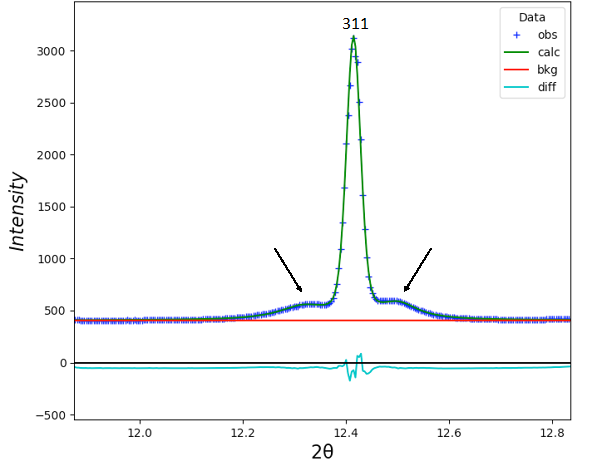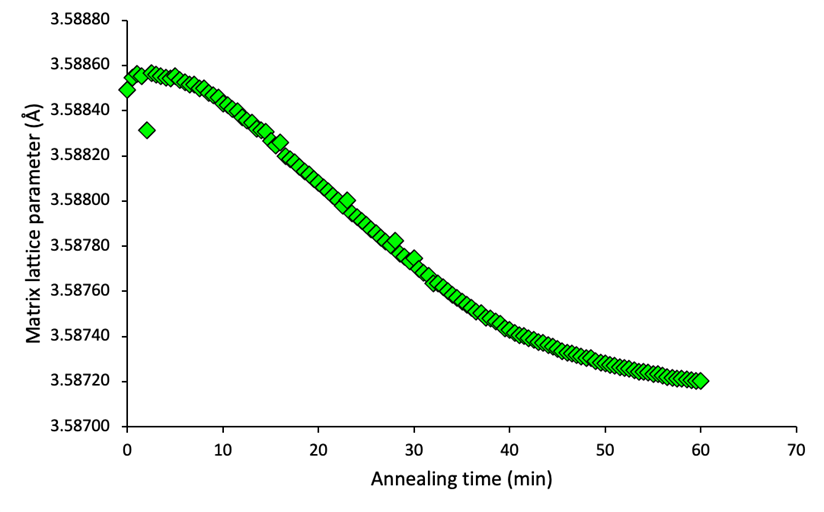DELIGHTED researchers successfully conducted in situ synchrotron X-ray diffraction studies on a steel grade developed within the project framework at the P21.2 beamline of PETRA III at DESY (Hamburg, Germany) earlier this month (October 2 to 4), 2023.
The team included the leading expert in in situ synchrotron experiments, Prof. Efthymios Polatidis, and research associate Stavros Valilis from the University of Patras (Greece), along with Dr. Alexandros Banis (UGENT) and Dr. Ilchat Sabirov (IMDEA).
The primary objective of this experimental work was to gain a fundamental understanding of the precipitation and growth of k-carbides in Fe-Mn-Al-C steels and related physical phenomena.
The quantitative information obtained about the kinetics of the spinodal decomposition process (shown in Fig. 1) will also significantly contribute to the development and validation of theoretical models describing the precipitation process.

With the experiment the team was able to investigate the effect of the spinodal decomposition on the lattice parameter of the FCC matrix as shown in Fig. 2 below:


